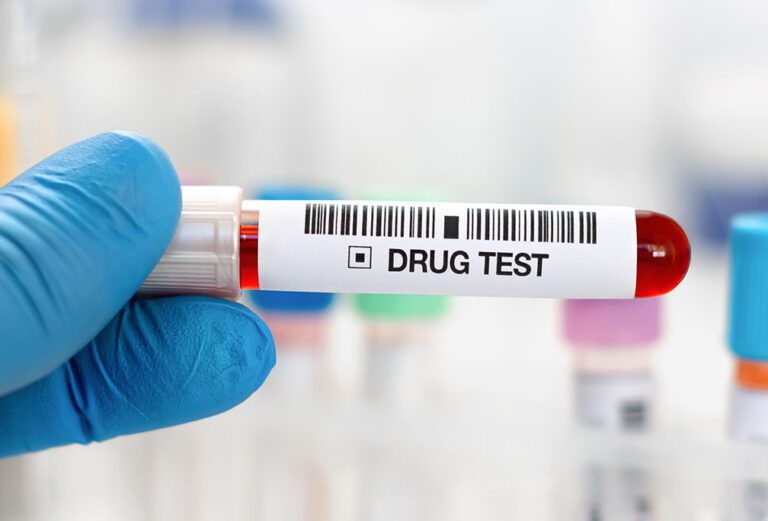There are new tools available in the fight to keep impaired drivers from behind the wheel of commercial vehicles, but development and implementation are being outpaced by new drugs on the streets. The trucking industry, frequently targeted for massive court awards and settlements, is trying to make the best out of outdated tools and glacially slow government help. And there are social justice issues to contend with, too.
For the most part, the industry was encouraged by the Federal Motor Carrier Safety Administration’s (FMCSA) June 1, 2023, final ruling that allows oral fluid testing for employees who are performing safety-sensitive functions. While this new rule isn’t the hair follicle testing the industry has been pushing for, it does provide another weapon in the arsenal against impaired driving.
Except … it really doesn’t.
A provision of the rule requires at least two laboratories certified by the U.S. Department of Health and Human Services (HHS) for oral fluid testing under U.S. Department of Transportation (DOT) requirements. CFR part 40 requires that samples used for testing be split, and, if the first sample is found to be positive, employees have the right to demand that the second sample be tested by a different lab.
Testing sites are another issue. According to an October 2, 2023, notice from HHS in the Federal Register: “At this time, there are no laboratories certified to conduct drug and specimen validity tests on oral fluid specimens.” In other words, oral fluid testing still can’t be used for DOT testing purposes. Like hair follicle testing, carriers can choose to use this testing method under company policy — but the results can’t be entered in the Drug and Alcohol Clearinghouse and can’t be used for CDL licensing actions.
Despite the delays, it’s important that carriers remain current with drug testing policy, including whether oral fluid or urine testing will be required, and under which circumstances. Carriers that decide to perform on-site testing will need to identify and train collectors and maintain a supply of test kits, as well as up-to-date employee manuals. They’ll also need to ensure that vendors used for collection are trained for and have the supplies needed for oral fluid testing.
In the meantime, the trucking industry has lost more than 3,000 drivers per month to drug testing since the implementation of the FMCSA Drug and Alcohol Clearinghouse in January 2020. While the Clearinghouse is achieving its intended purpose in sharing drug testing information, the success rate of getting drivers clean and returning them to duty has been less than ideal.
Since the Clearinghouse started, only 6.1% of drivers who tested positive for controlled substances completed a follow-up testing plan, according to numbers on the Clearinghouse website. More than half (53.5%) of the more than 111,000 tested never started the return-to-duty process. Those numbers do not include users who left the industry (or never entered it at all) due to drug testing standards.
While no one advocates allowing drug-impaired drivers in the cabs of commercial vehicles, critics point out that current drug testing doesn’t measure impairment; it simply measures the use of a substance. And by far, the most commonly used drug is marijuana. In the first 44 months of Clearinghouse operations, 58% of positive test results have been for weed, or at least for its active ingredient, delta-tetrahydrocannabinolic acid, or THCA, the precursor to the more commonly known THC.
While a person’s level of impairment due to alcohol consumption can be measured, there is currently no test that can identify a marijuana user’s level of impairment. A breathalyzer device was developed in late 2019 by researchers at the University of Pittsburgh, working with the Swanson School of Engineering, but further testing at Colorado University-Boulder found that breath concentrations of THC could revert to non-use levels soon as one hour after smoking. Even when levels can be identified, such as by blood testing, the drug affects individual users differently. No standards exist for the level of THC that might indicate intoxication or impairment.
While attempts to develop testing continue, 23 states have legalized marijuana for recreational use, along with Washington, D.C., and at least six Native American reservations. Fifteen more states have legalized the drug for medicinal use, and two states that haven’t legalized it have decriminalized its possession and use. Clearly, the public is behind legalization, which could happen at the federal level, too.
Increasingly, voters are supporting the easing of remaining restrictions on marijuana use. The National Organization for the Reform of Marijuana Laws, NORML, conducts its “Smoke the Vote” initiative to help ensure turnout of supporters during every election.
On the employment front, New York City, Philadelphia, and other jurisdictions have enacted rules that restrict testing for marijuana for employment purposes for at least some jobs. A Michigan law that took effect October 1, 2023, halts pre-employment marijuana tests for most state jobs.
To add to the confusion, yet another drug has made an entry into the legalization process. An Oregon law passed in November 2020 directs the state to license and regulate products containing psilocybin, the active ingredient in hallucinogenic “magic” mushrooms. The state created Oregon Psilocybin Services, a subagency that specifically deals with the drug.
While drug testing requirements may be slow to change, the substances they test for change frequently as new threats are identified each year. Fentanyl is a drug that commonly makes the news. Popular with dealers due to its strong potency, fentanyl is often added to more common drugs like cocaine and even marijuana to increase potency. Deaths due to fentanyl overdose are frequently reported.
Other “new” drugs include xylazine (sometimes called “tranq dope”), isotonitazene, and carfentanil — all synthetic opioids — and Phenibut, a Russian depressant drug that is available online as a supplement. Another drug, Flakka, is a stimulant that can cause psychotic symptoms.
By the time the government implements the process for oral fluid testing, new tests may need to be developed to keep pace with even more new substances. Carriers can only do their best to keep drug-testing policies current and prepare for additional testing methods while ensuring compliance with current regulations.
This article originally appeared in the November/December 2023 edition of Truckload Authority, the official publication of the Truckload Carriers Association.
Cliff Abbott is an experienced commercial vehicle driver and owner-operator who still holds a CDL in his home state of Alabama. In nearly 40 years in trucking, he’s been an instructor and trainer and has managed safety and recruiting operations for several carriers. Having never lost his love of the road, Cliff has written a book and hundreds of songs and has been writing for The Trucker for more than a decade.








